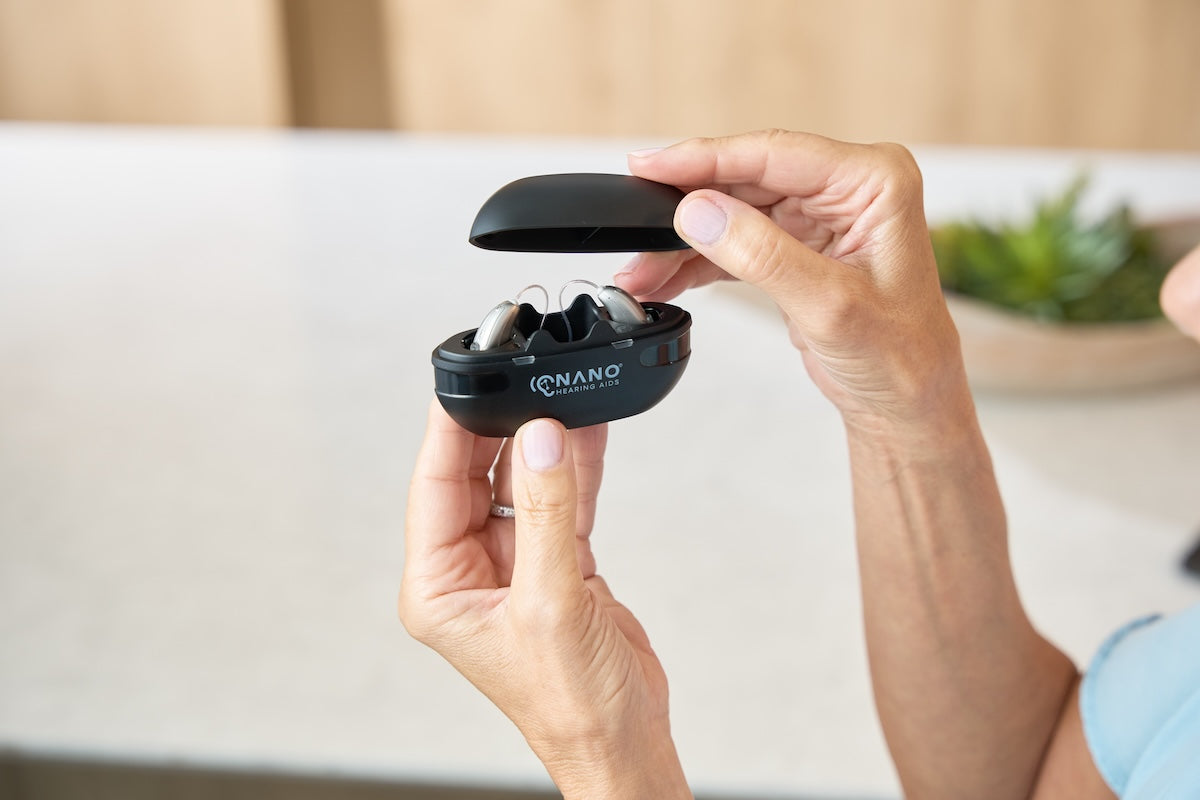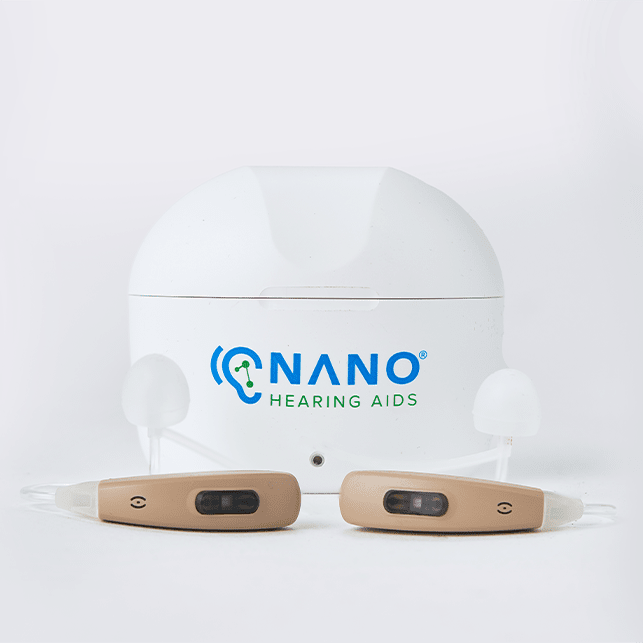When it comes to hearing aids, you have options. But if you’re trying to decide between rechargeable hearing aids and traditional battery-powered ones, the scales tip heavily in favor of rechargeables. Learn why making the switch to rechargeable hearing aids is a smart move for you.
6 Reasons to Choose Rechargeable Hearing Aids vs Battery-Powered Hearing Aids
1. Convenience
Imagine never having to fiddle with tiny disposable batteries again. Hearing aids with rechargeable batteries typically eliminate the hassle of changing batteries, letting you enjoy uninterrupted hearing without the constant need for replacements. Just place your hearing aids in their charging case each night, and they’ll be ready to go the next day. With rechargeable hearing aids, you can focus on what matters most instead of worrying about your hearing aid’s power supply.
2. Cost-Effective Over Time
Disposable batteries need frequent replacements, which can add up quickly. On the other hand, rechargeable batteries in hearing aids have a longer lifespan, which means you’ll spend less on batteries over the years. Plus, many rechargeable hearing aids use lithium-ion (Li-ion) batteries or nickel metal hydride batteries (NiMH batteries), which are designed to last and hold their charge longer than traditional, non-rechargeable zinc-air batteries.
3. Eco-Friendly Choice
Rechargeable hearing aids are not just good for you—they’re good for the environment, too. By reducing the number of disposable non-rechargeable batteries that end up in landfills, you’re making a more sustainable choice. Common rechargeable batteries in hearing aids can last for years, significantly cutting down on environmental impact compared to alkaline batteries and other disposable types.

4. Superior Performance
Rechargeable hearing aids often use advanced lithium-ion batteries, which are known for their high energy density and long shelf life as opposed to a traditional zinc-air battery. These batteries are less prone to frequent discharges and can handle high drain devices, making them ideal for the demands of modern hearing aids. This means you’ll experience consistent performance without the need for frequent battery changes, ensuring your hearing aids are always ready when you need them.
5. Simplified Maintenance
Using disposable batteries can be a chore. This is because they require proper disposal (usually at designated recycling centers or drop-off locations for batteries) and can sometimes leak or corrode, leading to maintenance issues. Hearing aids with a rechargeable battery, however, come with a charging station that’s easy to use and maintain. You don’t have to worry about the hassle of dealing with battery compartments—just pop your hearing aids into the charger, and you’re set.
6. Reliable and Consistent Power
Rechargeable batteries provide a steady power supply, which is important for the reliable performance of your hearing aids, even if used as low-drain devices (consuming minimal power). With traditional batteries, you might experience a gradual decline in performance as the battery drains. Rechargeable hearing aids work to offer a consistent power level until they need a recharge. This ensures your hearing aids perform optimally throughout the day, without unexpected power drops.
Switching to rechargeable hearing aids is more than just a trend—it’s a practical choice for a better hearing experience. From the convenience and cost savings to the environmental benefits and reliable performance, rechargeable hearing aids offer numerous advantages over traditional battery-powered options. Embrace the future of hearing aids and enjoy the ease and efficiency of rechargeable technology.
The Best Rechargeable Hearing Aids: Nano OTC Hearing Aids
Avoid frequent battery changes with Nano OTC hearing aids. All Nano hearing aids are rechargeable. Simply charge the devices overnight and enjoy a full day of use before needing to recharge.
For those with perceived mild to moderate hearing loss, OTC hearing aids can be a great solution for improving hearing. These FDA-registered devices don't need a prescription, hearing exam, or doctor's appointment. You can try them in the comfort of your home and adjust the volume to suit your specific needs.
With Nano OTC hearing aids, you can pick the best dome size for your ears, turn them on, and put them in. Keep in mind it might take several days or weeks for your ears and brain to get used to them, which is why Nano OTC Hearing Aids comes with a 45-day money-back guarantee and free 24/7 lifetime support.





